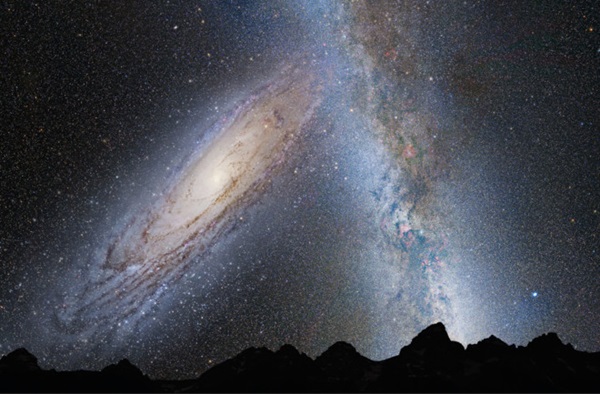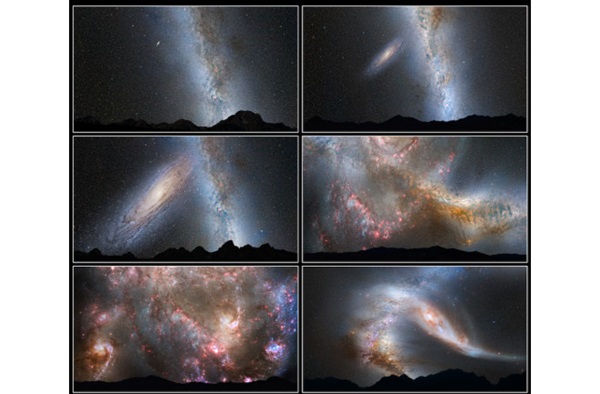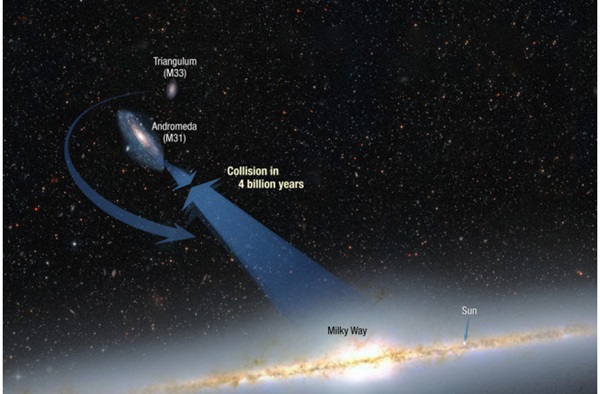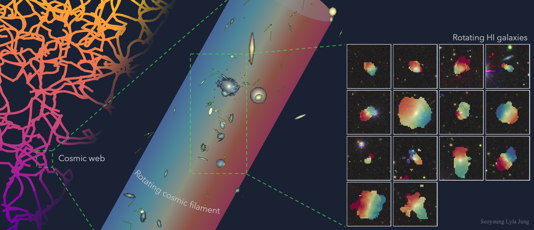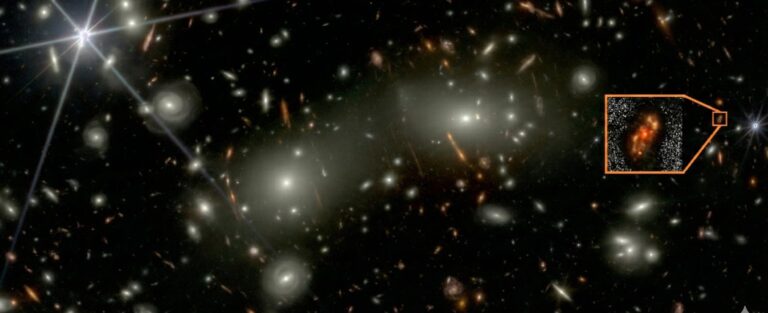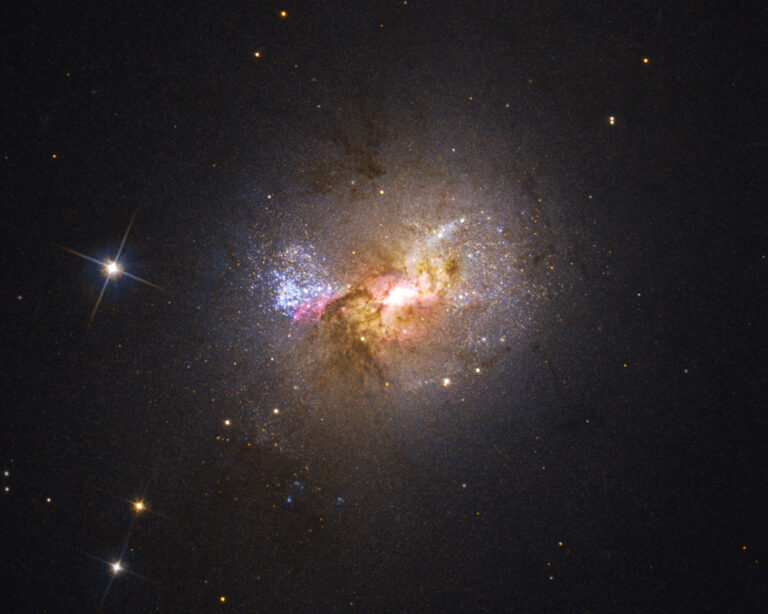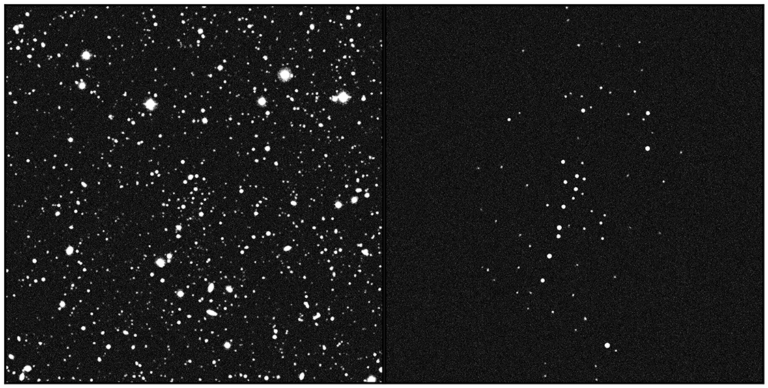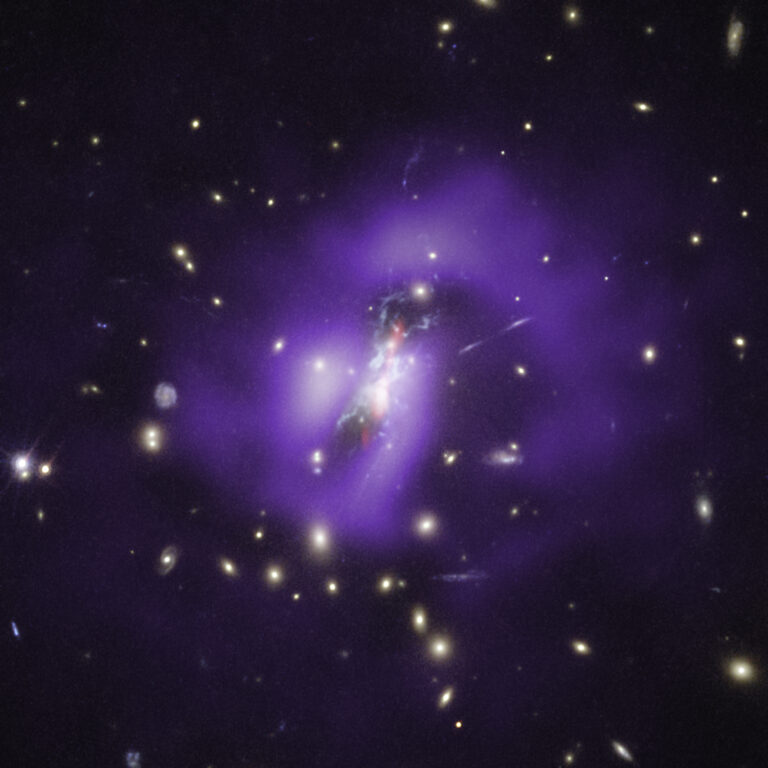Key Takeaways:
- The Milky Way Galaxy has experienced significant past collisions, notably a major merger with the dwarf galaxy Gaia Enceladus approximately 10 billion years ago, resulting in substantial structural changes to the Milky Way.
- Ongoing interactions with the Sagittarius and Large Magellanic Cloud (LMC) galaxies are currently impacting the Milky Way, causing phenomena such as warped galactic disks and triggered star formation.
- The LMC, along with its associated satellite galaxies, is on a collision course with the Milky Way, predicted to occur in approximately 2 billion years, potentially altering the Milky Way's characteristics, such as its supermassive black hole size and stellar halo.
- A future collision with the Andromeda Galaxy is expected in about 4 billion years, ultimately transforming both galaxies into a single, larger elliptical galaxy.
Stars and galaxies move around us at a pace that seemsglacial on human time scales. Their dance is exceedingly gradual, taking place over billions of years. But if we could see time the same way the stars do, the neighborhood around our Milky Way Galaxy would appear surprisingly active.
Galaxies swing around one another, slowly spiraling together until they merge. Many don’t travel alone but bring companions with them, in a dark collision that may tear some stars from the heart of their homes and splay them across the sky. Other regions grow rich in gas and dust and begin, in their newfound opulence, to birth new stars. The dance of the galaxies is slow and violent, filled with both life and death.
The Milky Way drives the motion of the collection of more than 100 galaxies known as the Local Group. Within that group, only the Andromeda Galaxy is larger than the Milky Way — roughly 125 percent more massive — and like our galaxy, it has a spiral shape. Two smaller galaxies stand out: the Triangulum Galaxy, dancing around Andromeda, and the Large Magellanic Cloud (LMC), orbiting the Milky Way. The rest of the neighborhood is filled mostly with satellites of the pair, smaller galaxies hovering like adoring fans. These galaxies flit about, but eventually will meld with their larger companions. When that happens, it will not be the first time our galaxy has bumped into another.
Ancient artifacts
The Milky Way suffered its first major collision early in its lifetime, roughly 10 billion years ago. Prior to that, it probably had a handful of scrapes with smaller galaxies, but the dramatic crash into a galaxy referred to as Gaia Enceladus left lasting scars. For a long time, those scars were hidden, their absence puzzling astronomers. It took the European Space Agency’s Gaia space telescope to bring them to light in 2018, after years of hints.
“Before the Gaia data was released, we thought the Milky Way was a very quiet galaxy with no dramatic impact,” says Eloisa Poggio, an astronomer at the Astrophysical Observatory of Turin in Italy. “It’s more complicated than we thought before.”
Gaia Enceladus was a dwarf galaxy, slightly smaller than the Milky Way, perhaps 2 billion years old when it crashed into us. The collision would have significant ramifications. The Milky Way was a stubby disk from which stars were flung out, creating its halo. Part of the disk then became unstable and collapsed into a barlike structure. Over time, a new, thin disk was created. When the show was over, the Milky Way was a different galaxy.
“This is a key pivotal moment in the Milky Way’s life,” says Vasily Belokurov, part of one of the two teams that co-discovered the ancient artifact. “It unleashed a sequence of transformations in the Milky Way that have changed it into the Milky Way we know.”
For the next few billion years, the Milky Way was quiet, consuming the occasional satellite galaxy but leaving the larger ones alone. That changed around 6 billion years ago when the Sagittarius Galaxy made its own grand entrance.
Sagittarius is an elliptical galaxy, one of the nearest neighbors to the Milky Way, and is coming to an agonizing end as it interacts with the larger object. Discovered in 1994, Sagittarius spirals around the Milky Way’s poles, a hundred to a thousand times less massive than our galaxy.
In 2018, scientists discovered a warp in the disk of the Milky Way. Large-scale distortions — collections of stars gravitationally shoved together — are common among spiral galaxies, and ours travels relatively slowly around the disk. A warp can form due to interactions within a galaxy, but the movement suggests an external origin. “The only possible model that can explain such large precession is interaction with a satellite [galaxy],” says Poggio, who measured and tracked the warp.
But who’s the culprit? While it’s possible that the Milky Way’s warp was caused by the LMC, Poggio thinks that the influence of Sagittarius might be stronger, and she’s working to prove it. Confirming her theory requires further simulations, which she is in the process of analyzing.
Sagittarius is also triggering waves of star formation in the Milky Way. Researchers have found patches of star formation that coincide with the closest approach, or pericenter, of the dying galaxy. Gravitational interactions push together piles of gas and dust to create regions ripe for starbirth. Tomás Ruiz-Lara, an astronomer at Kapteyn Astronomical Institute, the Netherlands, found bursts of stellar formation roughly 6.5 billion, 2 billion, and 1 billion years ago, and tied each one to severa pericentric passes of Sagittarius.
“The main surprise is that something so small is able to cause all these effects,” says Ruiz-Lara. “Sagittarius is an important actor in the film of the origin and evolution of our galaxy.”
Destruction ahead
Sagittarius isn’t the only galaxy ready to smash into the Milky Way. The LMC, the fourth largest object in the Local Group, is slowly spiraling towards us. For decades, astronomers thought that the massive irregular galaxy and its smaller cousin, the Small Magellanic Cloud (SMC), had already made several loops around the Milky Way. But in 2007, astronomers used the Hubble Space Telescope to confirm that the pair were on their first approach.
Although the LMC won’t merge with us for another 2 billion years, it is already making its presence felt. Because it is so massive, not only is the
LMC drawn to the Milky Way, but the Milky Way itself is also pulled towards the LMC. A collection of material rather than a solid body, the Milky Way responds to the interaction differently in different regions. The inner halo and stellar disk are being tugged by the LMC, while outer halo material does not move much. “It’s a total mess,” Belokurov says.
Unlike Sagittarius, the LMC isn’t alone. In addition to the SMC, the LMC appears to be bringing its own satellite galaxies. “Those satellites are coming along for a ride,” says Ekta Patel, an astronomer at the University of California, Berkeley. Patel has studied several of the smaller galaxies of the Local Group and found six that appear tied to the Magellanic Clouds — for now. The future collision between the Milky Way and the LMC may cause them to disconnect from the LMC. At that point, they may fall into the Milky Way along with the LMC, or they could wind up flying off on a new orbit.
Colliding with the LMC may make the Milky Way more like other spiral galaxies. Today, the Milky Way has a supermassive black hole much smaller than the black holes of other similarly sized galaxies. The halo of stars surrounding the galaxy is lightweight and metal-poor. And the LMC is an unusually large satellite for similar spirals. All of these are likely signs of the unusual quiet period our galaxy has gone through; most galaxies undergo more than one major merger, while the Milky Way has so far only clashed with Gaia Enceladus. “Since then, there has been hardly anything,” says Marius Cautun, an astronomer at Leiden Observatory in the Netherlands.
In a 2019 paper, Cautun and his colleagues simulated how the upcoming collision with the LMC will change the Milky Way. The size of our galaxy’s black hole should grow up to eight times larger. Stars from the infalling galaxy, as well as those pulled from the Milky Way’s disk, should bulk up the stellar halo and metallicity. By the end of the crash, the Milky Way should be less unique and more comparable to other galaxies.
Perhaps the most well-known collision in the Milky Way’s neighborhood has yet to happen. The massive Andromeda Galaxy, also known as M31, will smash into us in about 4 billion years. Although this event has long been suspected, it wasn’t until 2012 that scientists used NASA’s Hubble Space Telescope to prove it by measuring the sideways motion of Andromeda. By comparing previous observations, scientists concluded that Andromeda was moving straight towards us. Refined measurements using the Gaia telescope now indicate that the smash-up will be slightly off-axis.
“Whether it’s fully a head-on collision or more of a glancing blow doesn’t really affect the end result,” says Roeland van der Marel, an astronomer at the Space Telescope Science Institute who led the teams that took both measurements. That end result will convert the two spiral galaxies into one spheroidal elliptical galaxy, empty of almost all of its star-forming gas. The supermassive black holes will spiral together, eventually becoming a single monster in the heart of the new galaxy.
Crash! Bang!
As the LMC and SMC orbit the Milky Way, they are in the midst of their own tug-of-war. In 2012, Gurtina Besla, of the University of Arizona, was part of a team that modeled the results of a collision between the LMC and SMC. Two years ago, another team’s observations of massive, hot young stars inside the pair confirmed their model — the two had collided only a few hundred million years ago.
Prior to the 2000s, astronomers knew about only a handful of satellites in the Milky Way’s neighborhood. That changed with digital sky surveys. Now we know of dozens of other, smaller satellite galaxies tied to our own, many of which are extremely faint. The arrival of the Gaia telescope’s second data release allowed us to track the motion of these satellites. “Gaia is amazing because it allows us to track the motions of stars in the faintest known galaxies,” Patel says. “It’s a huge game changer.”
With masses less than 10 percent of the Milky Way, the tiny satellites are controlled by the stronger gravity of the larger galaxy. As stars are being torn from the galaxies, they create stellar streams, ribbons of stars that stretch across the sky.
Andromeda is also suffering its own ongoing collision. The Triangulum Galaxy, third largest in the neighborhood, is currently falling into Andromeda in much the same way the LMC is falling into the Milky Way. Although radio telescopes have done a good job of measuring the motion of the smaller galaxy, Gaia was able to confirm those measurements, and provide a little more insight.
“It’s a little surprising, but it appears that the most consistent scenario with the observations is that Triangulum is falling into Andromeda for the very first time,” says van der Marel, who used Gaia to measure the motion of the smaller galaxy.
On reflection, however, the connection between Triangulum and the LMC — both making their first approach towards galaxies roughly 10 times larger than they are — is not as surprising as it seems, van der Marel says. Current understanding of galaxy formation involves smaller things falling into larger ones to build them up. He says it’s more likely to find something relatively massive only beginning to merge with its parent galaxy, rather than having orbited it several times over billions of years. That’s because the large galaxies are more likely to be swallowed up over a few cycles.
The dance of galaxies may take billions of years to conclude, but it will eventually merge the Milky Way and its neighbors into a single collection of stars. When the music stops, Andromeda, the Milky Way, and all of their satellites will have lost their spiral and their young stars. All that will be left is the collection of aging stars in a dustlessgalaxy, enjoying the silence of its golden years.

